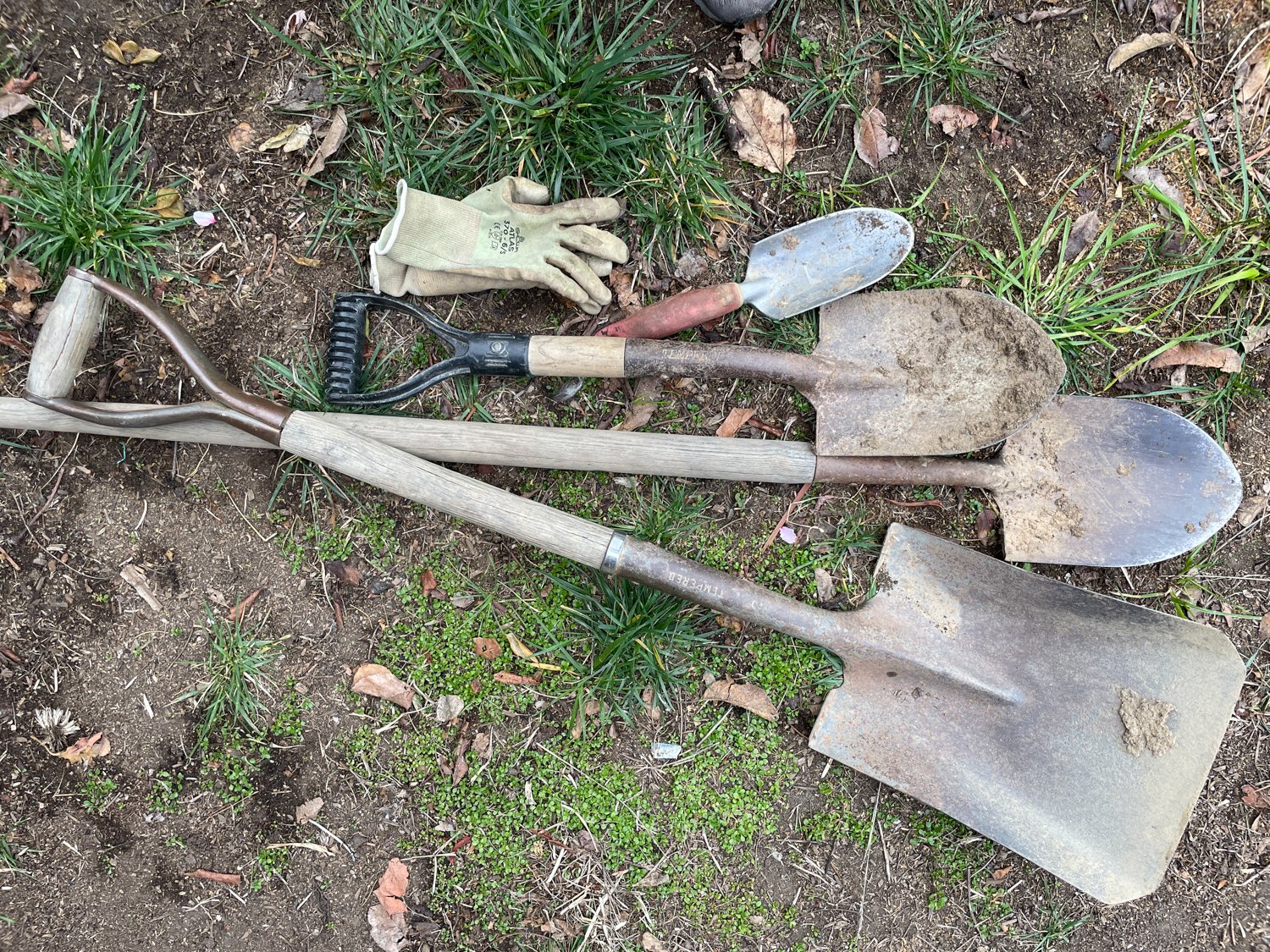Planting Trees and Workdays
Introduction
If your school is having a tree planting day, involve your students! There will be many different tasks on planting day, such as digging the hole, managing tools, getting the tree out of its container or wrapper, planting the tree, filling in the hole, watering, staking, and photographing the process. Students can help with all or parts of these tasks, depending on their age.
Planting during the school week has the advantage of including all students. Planting workdays during the weekend can include more family members and other community members but will probably leave out some students who can’t attend.
Students can and should be involved in other outdoor tasks that may occur before or after planting day. If new soil or mulch is delivered to the school, for example, the pile will need to be moved to the appropriate area. This is an excellent opportunity for some physical exercise, teamwork, experience with tools, and fun bucket brigade and wheelbarrow experiences. Students will have the pride of accomplishment, a sense of ownership, and a cherished memory.
Resources
How can you best prepare yourself and your students for what to expect during a workday? We have included some resources below to help guide you.
Student Readiness
Helping students prepare for a planting day includes sharing information on appropriate clothing and hats for work and weather (including wearing closed-toed shoes), tool safety, pre-assigned roles of individual students/teams, allergy preparedness, and appropriate student hydration and snacks. Build in time to discuss possible anxieties about getting dirty, encountering bugs, or other concerns. Read a more detailed account in Organizing a Tree Planting Day in the sections on Tips, Materials, Prep Day, and Planting Day (MN Department of Natural Resources).
How to Plant Trees
Review some tips on tree planting and its associated vocabulary, such as how deep to dig a hole, handling young trees, tool management, and when and how to water.
Go Plant a Tree, from PBS, is a three-minute educational video that shows kids planting a tree with the help of an arborist.
Tree Planting Cue Card and Tarjeta para la Plantación de Árboles (Spanish), from CAL FIRE, have useful diagrams.
Tree planting organizations have many helpful videos online. If your school is working with a specific tree planting organization or other local experts, they may have slightly different instructions for you, but the basic steps will remain the same. Printing copies of the diagrams to have on-hand on planting day can be helpful. Please note that the terms root collar, root flare, and root crown are used interchangeably.
Adult Volunteers
Pairing a supporting adult or older student with small teams of students can help the planting day go smoothly. Plan on meeting with volunteers beforehand if possible and preparing them for their role. We want adults to support students and understand the basic tasks of planting, but we do not want them to take over and do all of the work!
Go Forth and Plant!
Checklists can help everyone stay organized. Try one of these sample checklists or create your own:
Tree Planting Checklist and Lista de Plantar Árboles (Spanish) from Common Vision and Growing Together
Tool Safety Suggestions
Give each other space.
Keep the sharp/metal end of the tool down by your feet, not your head.
Walk, don’t run.
Use the tool as a tool, not a toy.
Work carefully, not speedily.
Wear closed-toed shoes.
Invite students to share any prior experiences they may have had with planting and with the tools involved. This can be a chance for some students to take pride in expertise within their families, such as from farming, gardening, or construction, while also building intergenerational relationships.
< Return to Educator Resources Home Page
Schoolyard Forest System℠
The Schoolyard Forest System℠ Resource Library is a set of practical tools for schools and districts working to increase tree canopy on public school grounds to shade and protect PreK-12 students from extreme heat and rising temperatures due to climate change. Funding for the first phase of this initiative was provided by a grant administered by the California Department of Forestry and Fire Protection (CAL FIRE) Urban and Community Forestry Program, and private philanthropy.








